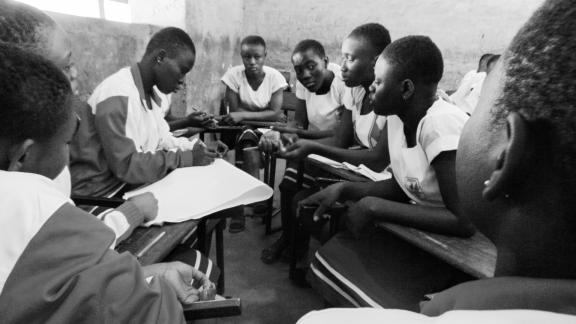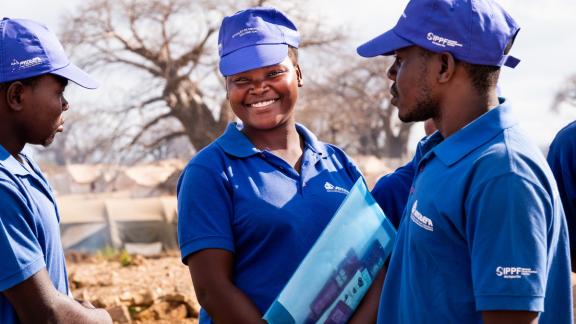Spotlight
A selection of stories from across the Federation

Advances in Sexual and Reproductive Rights and Health: 2024 in Review
Let’s take a leap back in time to the beginning of 2024: In twelve months, what victories has our movement managed to secure in the face of growing opposition and the rise of the far right? These victories for sexual and reproductive rights and health are the result of relentless grassroots work and advocacy by our Member Associations, in partnership with community organizations, allied politicians, and the mobilization of public opinion.
Most Popular This Week

Advances in Sexual and Reproductive Rights and Health: 2024 in Review
Let’s take a leap back in time to the beginning of 2024: In twelve months, what victories has our movement managed to secure in t
Kazakhstan

Kazakhstan's Rising HIV Crisis: A Call for Action
On World AIDS Day, we commemorate the remarkable achievements of IPPF Member Associations in their unwavering commitment to combating the HIV epidemic.
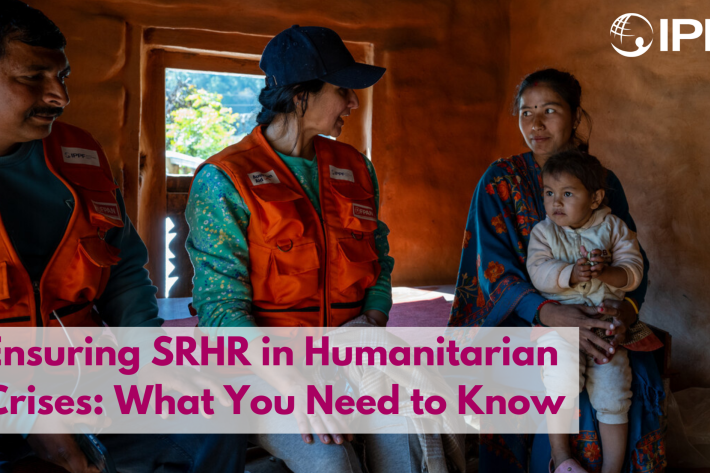
Ensuring SRHR in Humanitarian Crises: What You Need to Know
Over the past two decades, global forced displacement has consistently increased, affecting an estimated 114 million people as of mid-2023.
Estonia, Nepal, Namibia, Japan, Thailand

The Rainbow Wave for Marriage Equality
Love wins! The fight for marriage equality has seen incredible progress worldwide, with a recent surge in legalizations.
France, Germany, Poland, United Kingdom, United States, Colombia, India, Tunisia
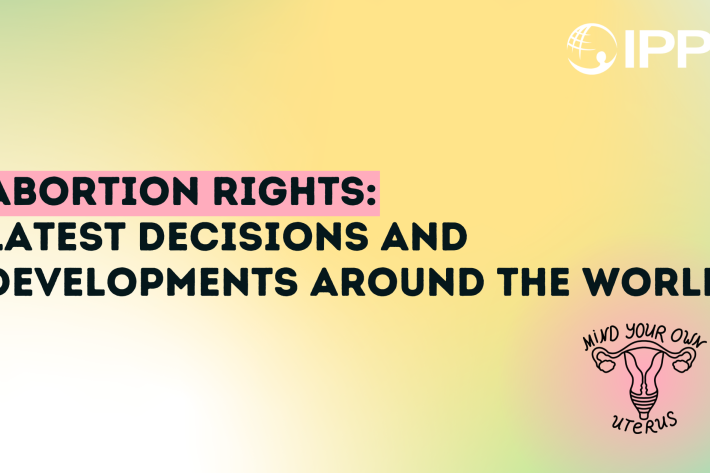
Abortion Rights: Latest Decisions and Developments around the World
Over the past 30 years, more than
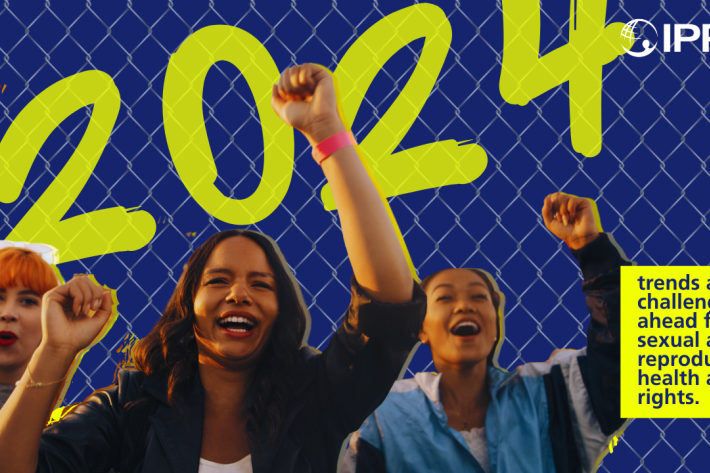
Palestine
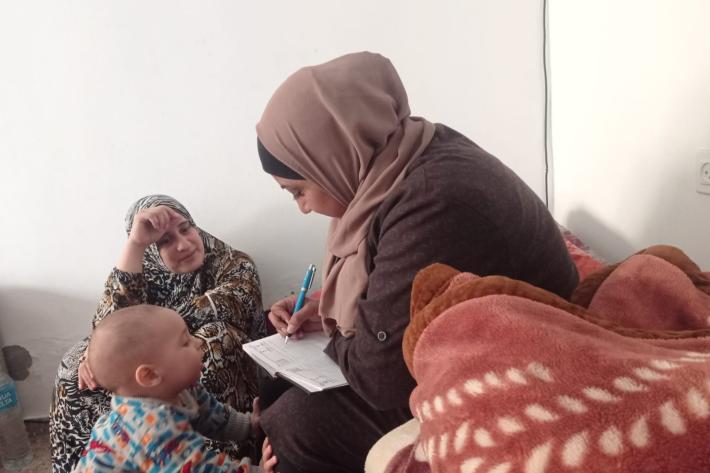
In their own words: The people providing sexual and reproductive health care under bombardment in Gaza
Week after week, heavy Israeli bombardment from air, land, and sea, has continued across most of the Gaza Strip.
Vanuatu

When getting to the hospital is difficult, Vanuatu mobile outreach can save lives
In the mountains of Kumera on Tanna Island, Vanuatu, the village women of Kamahaul normally spend over 10,000 Vatu ($83 USD) to travel to the nearest hospital.
Filter our stories by:
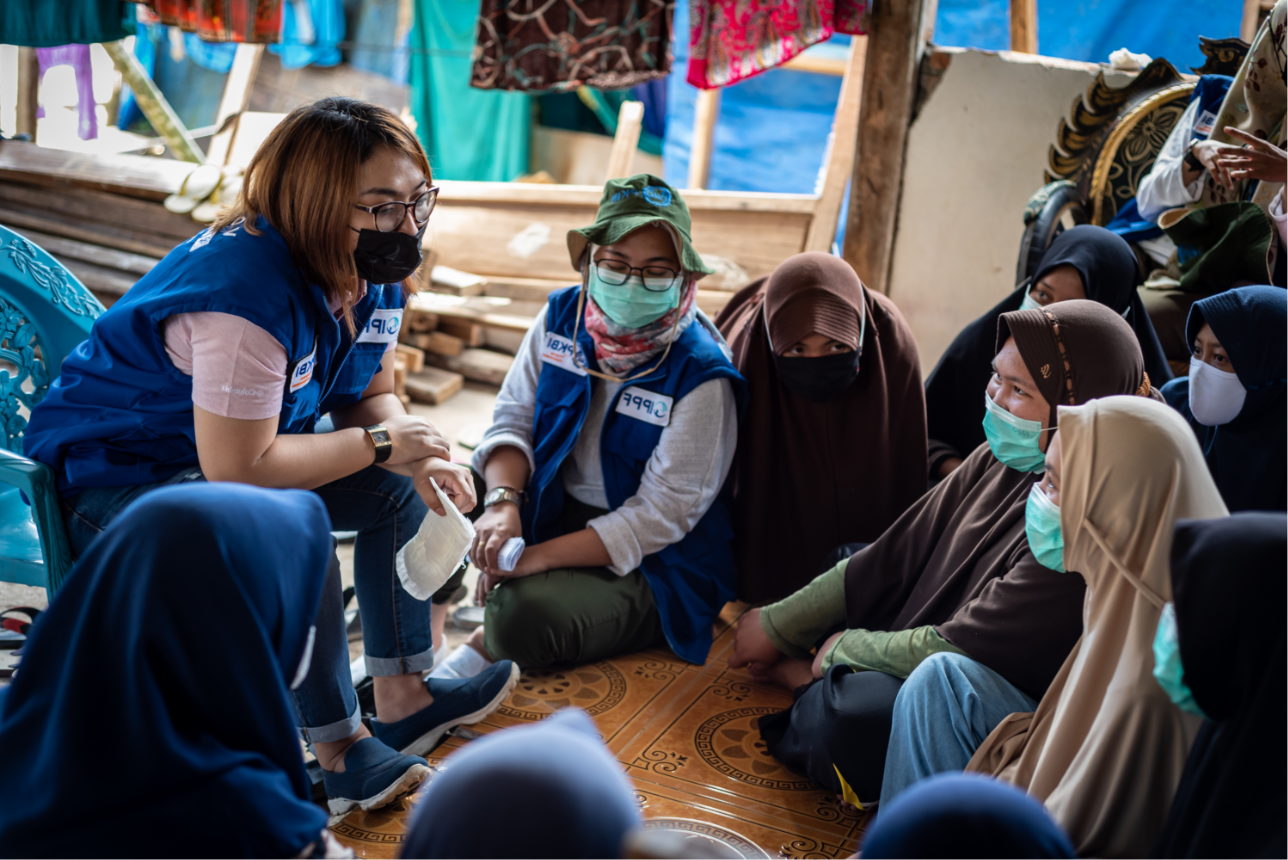
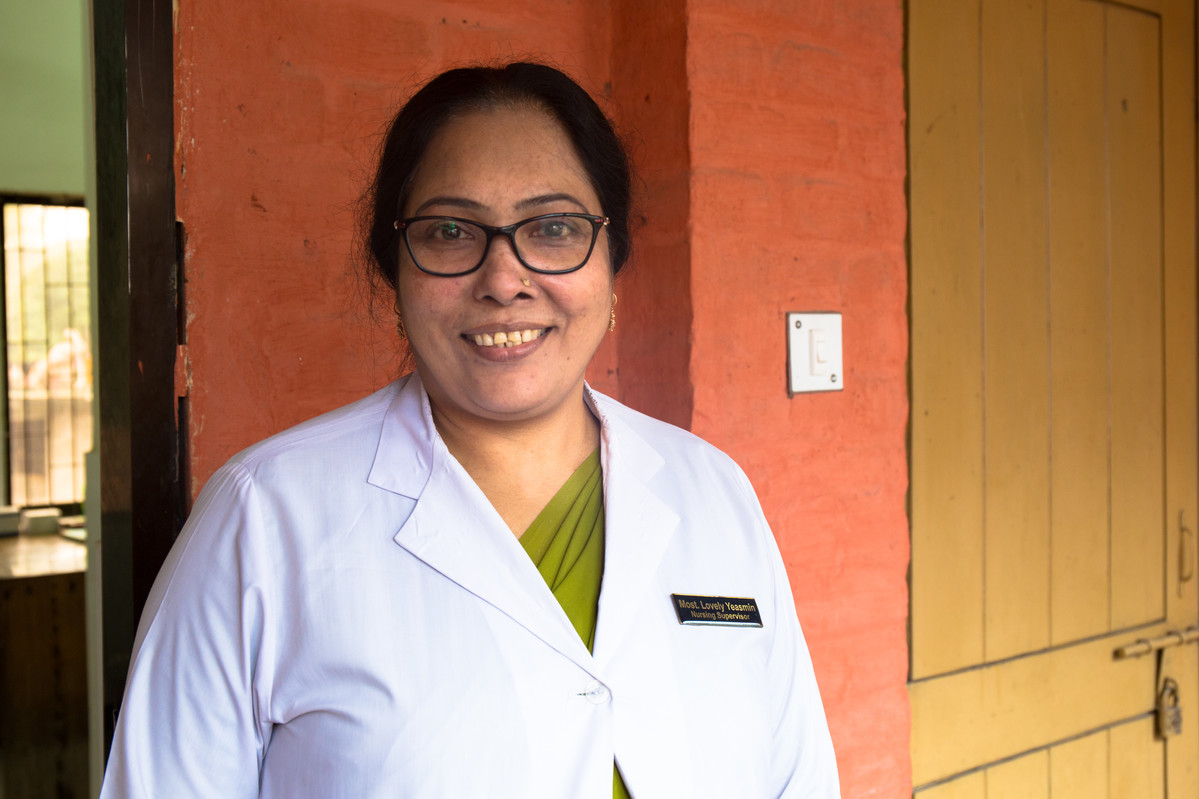
| 08 February 2018
"...now I can provide MR (menstrual regulation) services efficiently."
Menstrual regulation, the method of establishing non-pregnancy for a woman at risk of unintended pregnancy, has been a part of Bangladesh’s family planning program since 1979. It is allowed up to 10 –12 weeks after a woman’s last menstrual period. Nursing Supervisor Ms. Lovely Yasmin is one of several staff members providing family planning, menstrual regulation, and post-procedure care services at Upzila Health Complex in Belkuchi, Bangladesh. “Before this training we used to sometimes advise people on such services and provided menstrual regulation (MR) services but after the training I’ve have become and confident and efficient in providing MR services,” she says. “Earlier there could possibly have been mistake but now I can provide MR services efficiently and perfectly. I can now provide MR services in more organized manner.” But while Yasmin, who has worked in family planning for 16 years, says that the recent training has increased her confidence in properly doing MR procedures, the health complex still lacks basic supplies. “There were difficulties due to limited equipment,” she says. “We sometimes have to use personal equipment.” But, she says, the presence of Kit 8 has made life easier. “Prior to this kit, many clients did not complete the full course of medical as advices due to financial issues… during floods there are many hardships including financial difficulty,” she says. “However with this kit, most of the medicines are provided and clients are easily managing on their own.”

| 16 May 2025
"...now I can provide MR (menstrual regulation) services efficiently."
Menstrual regulation, the method of establishing non-pregnancy for a woman at risk of unintended pregnancy, has been a part of Bangladesh’s family planning program since 1979. It is allowed up to 10 –12 weeks after a woman’s last menstrual period. Nursing Supervisor Ms. Lovely Yasmin is one of several staff members providing family planning, menstrual regulation, and post-procedure care services at Upzila Health Complex in Belkuchi, Bangladesh. “Before this training we used to sometimes advise people on such services and provided menstrual regulation (MR) services but after the training I’ve have become and confident and efficient in providing MR services,” she says. “Earlier there could possibly have been mistake but now I can provide MR services efficiently and perfectly. I can now provide MR services in more organized manner.” But while Yasmin, who has worked in family planning for 16 years, says that the recent training has increased her confidence in properly doing MR procedures, the health complex still lacks basic supplies. “There were difficulties due to limited equipment,” she says. “We sometimes have to use personal equipment.” But, she says, the presence of Kit 8 has made life easier. “Prior to this kit, many clients did not complete the full course of medical as advices due to financial issues… during floods there are many hardships including financial difficulty,” she says. “However with this kit, most of the medicines are provided and clients are easily managing on their own.”
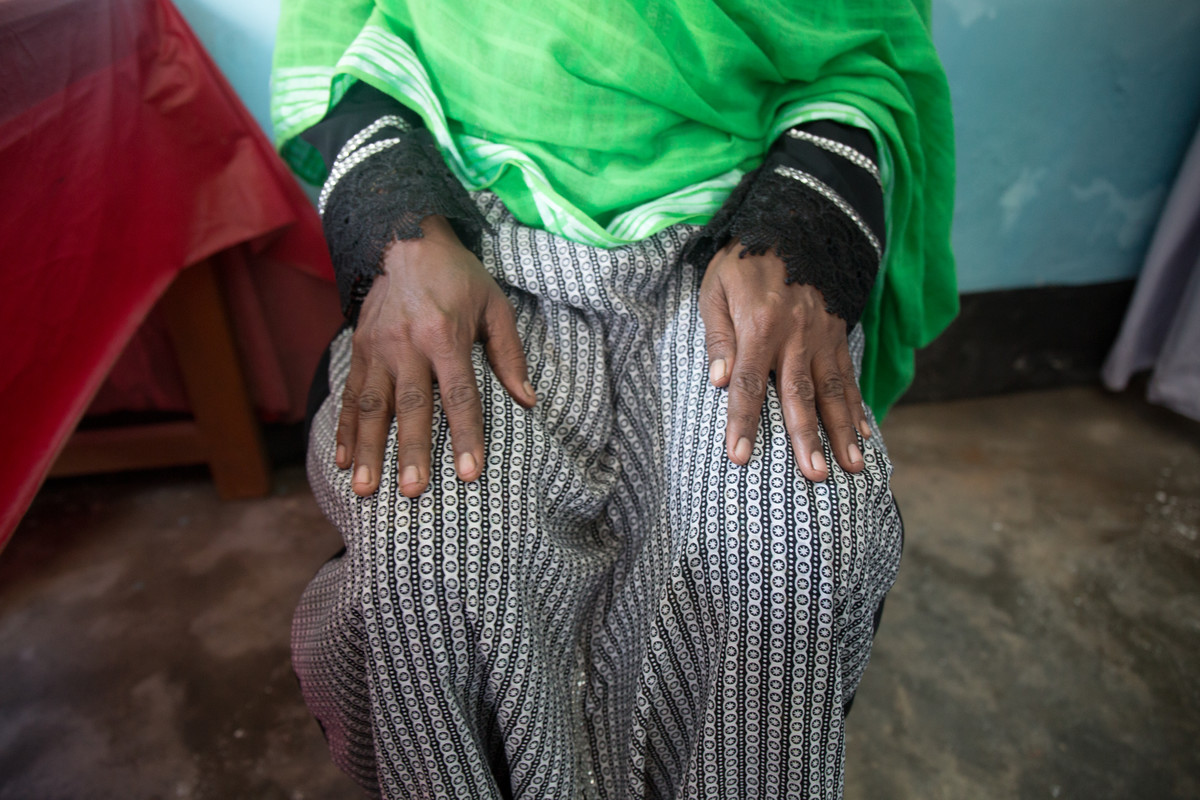
| 08 February 2018
“After the menstrual regulations services I was prescribed a few medicines which I could not buy due to poor financial condition”
Menstrual regulation, the method of establishing non-pregnancy for a woman at risk of unintended pregnancy, has been a part of Bangladesh’s family planning program since 1979. It is allowed up to 10 –12 weeks after a woman’s last menstrual period. When Shana Khatun, a mother of three, became pregnant again she says she began to feel very weak and had issues with massive bleeding.Citing her age and the possibility of further medical complications, Khatun decided to undergo a menstrual regulation procedure. “But if the hospital and services weren’t there then I would have had to have continued with my pregnancy, even when (I do) not want another child” she says. Khatun says that the procedure went well, but that without the presence of medicine found in Kit 8 she would have lacked post-operation medicine. “After the menstrual regulations services I was prescribed a few medicines which I could not buy due to poor financial condition,” she says. “But the hospital gave me a number of medicines that I could take.” And while Khatun had talked with women about various family planning methods, she didn’t feel she could talk with anyone aside from her husband about getting the procedure. “I feared they would treat me poorly (the hospital),” she says. But Kahtun says she found the hospital trustworthy and helpful, even when she was suffering complications such as mass bleeding. “I will be very cautious that I should not get pregnant again however in event if I get pregnant again then I will come to this hospital only,” she says.

| 16 May 2025
“After the menstrual regulations services I was prescribed a few medicines which I could not buy due to poor financial condition”
Menstrual regulation, the method of establishing non-pregnancy for a woman at risk of unintended pregnancy, has been a part of Bangladesh’s family planning program since 1979. It is allowed up to 10 –12 weeks after a woman’s last menstrual period. When Shana Khatun, a mother of three, became pregnant again she says she began to feel very weak and had issues with massive bleeding.Citing her age and the possibility of further medical complications, Khatun decided to undergo a menstrual regulation procedure. “But if the hospital and services weren’t there then I would have had to have continued with my pregnancy, even when (I do) not want another child” she says. Khatun says that the procedure went well, but that without the presence of medicine found in Kit 8 she would have lacked post-operation medicine. “After the menstrual regulations services I was prescribed a few medicines which I could not buy due to poor financial condition,” she says. “But the hospital gave me a number of medicines that I could take.” And while Khatun had talked with women about various family planning methods, she didn’t feel she could talk with anyone aside from her husband about getting the procedure. “I feared they would treat me poorly (the hospital),” she says. But Kahtun says she found the hospital trustworthy and helpful, even when she was suffering complications such as mass bleeding. “I will be very cautious that I should not get pregnant again however in event if I get pregnant again then I will come to this hospital only,” she says.
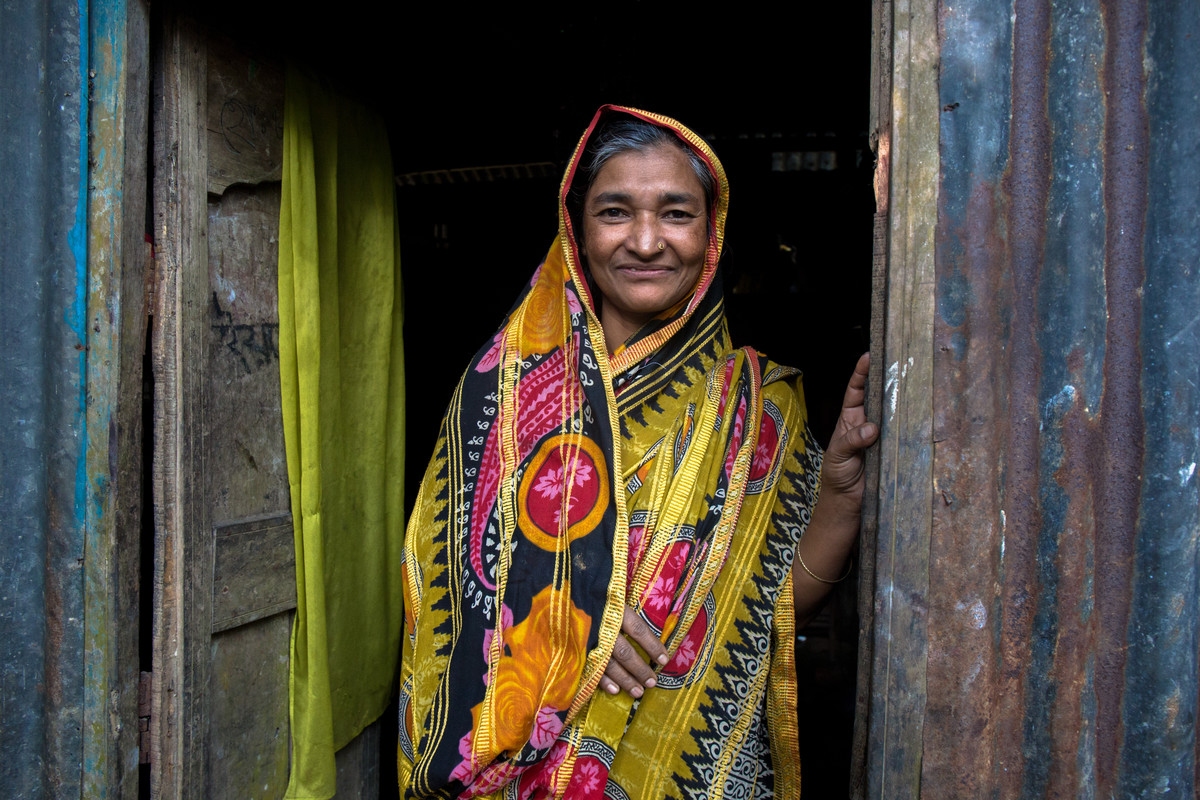
| 08 February 2018
“My spouse was supportive and he gave me the freedom to come to this decision myself”
Menstrual regulation, the method of establishing non-pregnancy for a woman at risk of unintended pregnancy, has been a part of Bangladesh’s family planning program since 1979. It is allowed up to 10 –12 weeks after a woman’s last menstrual period. Auliya Khatun, a mother of three children, was 40 years old when she found out that she had unintentionally become pregnant again. Khatun says she had heard about family planning services and menstrual regulation services available at the Upzila Health Complex from other women in her small village. She discussed the option of undergoing menstrual regulation with her husband. “My spouse was supportive and he gave me the freedom to come to this decision myself,” Khatun says. “If this service was not available then I would have carried on with the pregnancy. It would have been embarrassing, though,” she explains. “It is embarrassing to have another child at this age.” Khatun, who sometimes assists her husband with work in a local handloom, also cited the financial burden another child would have on her family. “We are facing financial difficulty so it is not possible to have another child.” Khatun says she only experienced mild gastric discomfort after the procedure but felt assured about her recovery due to being able to check-in with doctors at the local health centre. The access to the services and doctors, she says, was a major factor in a smooth and easy recovery. “Since this service was in a government facility I could prevail [through] this and survive,” she says. “It is an important service.”

| 16 May 2025
“My spouse was supportive and he gave me the freedom to come to this decision myself”
Menstrual regulation, the method of establishing non-pregnancy for a woman at risk of unintended pregnancy, has been a part of Bangladesh’s family planning program since 1979. It is allowed up to 10 –12 weeks after a woman’s last menstrual period. Auliya Khatun, a mother of three children, was 40 years old when she found out that she had unintentionally become pregnant again. Khatun says she had heard about family planning services and menstrual regulation services available at the Upzila Health Complex from other women in her small village. She discussed the option of undergoing menstrual regulation with her husband. “My spouse was supportive and he gave me the freedom to come to this decision myself,” Khatun says. “If this service was not available then I would have carried on with the pregnancy. It would have been embarrassing, though,” she explains. “It is embarrassing to have another child at this age.” Khatun, who sometimes assists her husband with work in a local handloom, also cited the financial burden another child would have on her family. “We are facing financial difficulty so it is not possible to have another child.” Khatun says she only experienced mild gastric discomfort after the procedure but felt assured about her recovery due to being able to check-in with doctors at the local health centre. The access to the services and doctors, she says, was a major factor in a smooth and easy recovery. “Since this service was in a government facility I could prevail [through] this and survive,” she says. “It is an important service.”
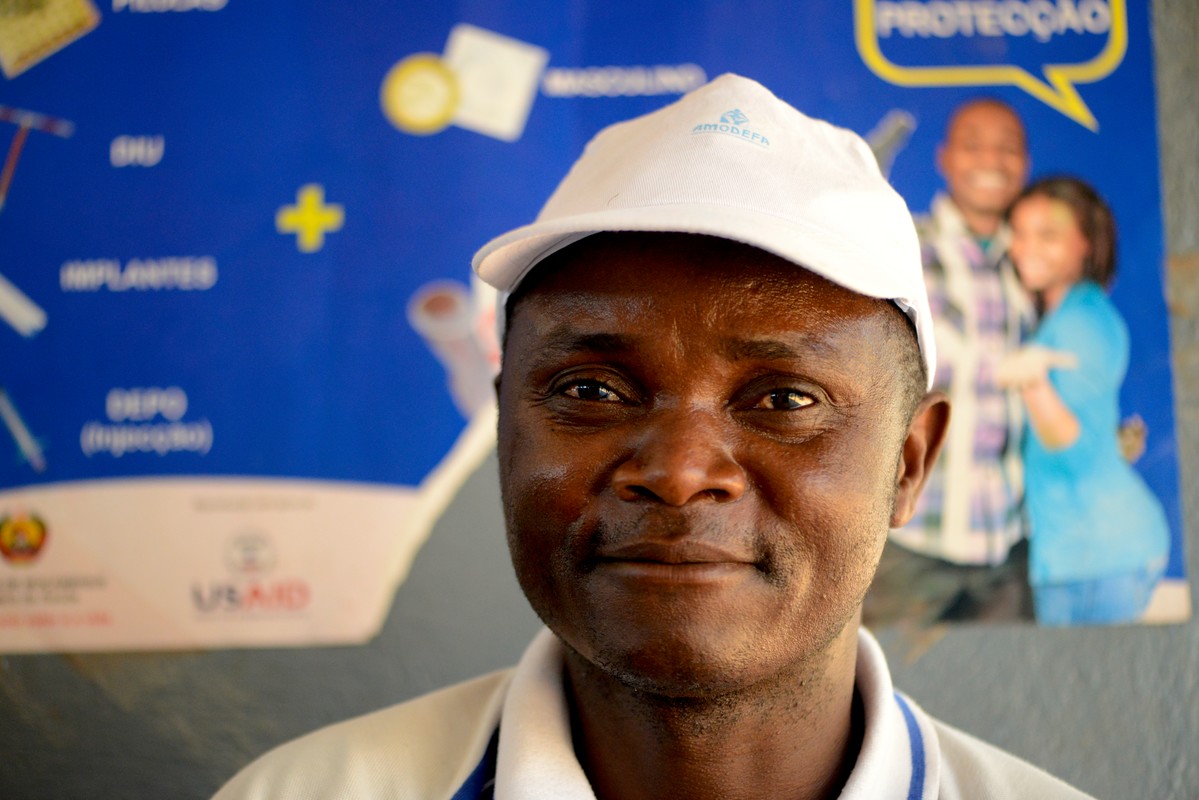
| 10 January 2018
“For people who live too far from the hospital to receive treatment, this programme saves their lives."
Marinho, 30, works as an activista for Amodefa’s Challenge TB programme, bringing treatment to remote villages in the Ribaué district of Nampula. Since August last year he has identified 84 cases of TB in the eight communities in which we works; “75 patients are in treatment at the moment, the rest are recovered,” he says. Before Amodefa started work in Nampula, Marinho says, “people were dying because they couldn’t reach the hospital, but with this programme it is becoming easier because we bring the medication to the patients.” However, lack of transport means it is a challenge for him to keep on top of all his cases. “The distances are far and the few bikes we have are breaking,” Marinho says. Yesterday he travelled 40 km to visit his patients. Some of the communities he visits are up to 50 km away. In the first quarter of this year 1,318 people were tested for TB in the eight districts where Amodefa operates; in the second quarter, 2,106 were tested; and in the third quarter, the number reached 3,154. More than half of these people were diagnosed to have TB. The surge in the number of people going for tests is in a large part due to Amodefa’s ‘Day of the Cough’. On the 27th of each month teams of activistas and volunteers go into communities, schools and jails to educate people about TB. Before volunteers had to go from house to house to identify patients, “but now, with the lectures, it’s easy to find people who are TB positive because they are identifying themselves,” says Marinho. Children are particularly receptive to Amodefa’s message, Marinho says. He remembers one woman who had been sick for a long time and her daughter, knowing he was an activist, sought him out. The patient’s initial test for TB came back negative, so she was given alternative medication. “She took the tablets but she was still sick - she was unable to walk or to eat,” Marinho says. “We brought her here to the clinic, examined her and she immediately started TB treatment. Now she has started her recovery and is able to sit.” Lessons taught during the ‘Day of the Cough’ means communities are also now taking greater precautions against the disease, he says. Steps such as opening windows, cleaning the house, not eating from one communal bowl, and practising ‘coughing etiquette’ have all helped limit the spread of TB. “People understand now and are taking serious measures to prevent it,” Marinho says. However, the US decision to withdraw funding from Amodefa following the introduction of the Global Gag Rule , could halt the Challenge TB programme just as it is gaining momentum. “If the programme stops the people will suffer,” says Marinho. “For people who live too far from the hospital to receive treatment, this programme saves their lives. Knowing Amodefa has come to eliminate TB, it can’t stop. If they stop now the TB will get resistant, so we’ve got to keep going, we’ve got to get stronger.” SUPPORT OUR WORK WITH A DONATION

| 16 May 2025
“For people who live too far from the hospital to receive treatment, this programme saves their lives."
Marinho, 30, works as an activista for Amodefa’s Challenge TB programme, bringing treatment to remote villages in the Ribaué district of Nampula. Since August last year he has identified 84 cases of TB in the eight communities in which we works; “75 patients are in treatment at the moment, the rest are recovered,” he says. Before Amodefa started work in Nampula, Marinho says, “people were dying because they couldn’t reach the hospital, but with this programme it is becoming easier because we bring the medication to the patients.” However, lack of transport means it is a challenge for him to keep on top of all his cases. “The distances are far and the few bikes we have are breaking,” Marinho says. Yesterday he travelled 40 km to visit his patients. Some of the communities he visits are up to 50 km away. In the first quarter of this year 1,318 people were tested for TB in the eight districts where Amodefa operates; in the second quarter, 2,106 were tested; and in the third quarter, the number reached 3,154. More than half of these people were diagnosed to have TB. The surge in the number of people going for tests is in a large part due to Amodefa’s ‘Day of the Cough’. On the 27th of each month teams of activistas and volunteers go into communities, schools and jails to educate people about TB. Before volunteers had to go from house to house to identify patients, “but now, with the lectures, it’s easy to find people who are TB positive because they are identifying themselves,” says Marinho. Children are particularly receptive to Amodefa’s message, Marinho says. He remembers one woman who had been sick for a long time and her daughter, knowing he was an activist, sought him out. The patient’s initial test for TB came back negative, so she was given alternative medication. “She took the tablets but she was still sick - she was unable to walk or to eat,” Marinho says. “We brought her here to the clinic, examined her and she immediately started TB treatment. Now she has started her recovery and is able to sit.” Lessons taught during the ‘Day of the Cough’ means communities are also now taking greater precautions against the disease, he says. Steps such as opening windows, cleaning the house, not eating from one communal bowl, and practising ‘coughing etiquette’ have all helped limit the spread of TB. “People understand now and are taking serious measures to prevent it,” Marinho says. However, the US decision to withdraw funding from Amodefa following the introduction of the Global Gag Rule , could halt the Challenge TB programme just as it is gaining momentum. “If the programme stops the people will suffer,” says Marinho. “For people who live too far from the hospital to receive treatment, this programme saves their lives. Knowing Amodefa has come to eliminate TB, it can’t stop. If they stop now the TB will get resistant, so we’ve got to keep going, we’ve got to get stronger.” SUPPORT OUR WORK WITH A DONATION

| 08 February 2018
"...now I can provide MR (menstrual regulation) services efficiently."
Menstrual regulation, the method of establishing non-pregnancy for a woman at risk of unintended pregnancy, has been a part of Bangladesh’s family planning program since 1979. It is allowed up to 10 –12 weeks after a woman’s last menstrual period. Nursing Supervisor Ms. Lovely Yasmin is one of several staff members providing family planning, menstrual regulation, and post-procedure care services at Upzila Health Complex in Belkuchi, Bangladesh. “Before this training we used to sometimes advise people on such services and provided menstrual regulation (MR) services but after the training I’ve have become and confident and efficient in providing MR services,” she says. “Earlier there could possibly have been mistake but now I can provide MR services efficiently and perfectly. I can now provide MR services in more organized manner.” But while Yasmin, who has worked in family planning for 16 years, says that the recent training has increased her confidence in properly doing MR procedures, the health complex still lacks basic supplies. “There were difficulties due to limited equipment,” she says. “We sometimes have to use personal equipment.” But, she says, the presence of Kit 8 has made life easier. “Prior to this kit, many clients did not complete the full course of medical as advices due to financial issues… during floods there are many hardships including financial difficulty,” she says. “However with this kit, most of the medicines are provided and clients are easily managing on their own.”

| 16 May 2025
"...now I can provide MR (menstrual regulation) services efficiently."
Menstrual regulation, the method of establishing non-pregnancy for a woman at risk of unintended pregnancy, has been a part of Bangladesh’s family planning program since 1979. It is allowed up to 10 –12 weeks after a woman’s last menstrual period. Nursing Supervisor Ms. Lovely Yasmin is one of several staff members providing family planning, menstrual regulation, and post-procedure care services at Upzila Health Complex in Belkuchi, Bangladesh. “Before this training we used to sometimes advise people on such services and provided menstrual regulation (MR) services but after the training I’ve have become and confident and efficient in providing MR services,” she says. “Earlier there could possibly have been mistake but now I can provide MR services efficiently and perfectly. I can now provide MR services in more organized manner.” But while Yasmin, who has worked in family planning for 16 years, says that the recent training has increased her confidence in properly doing MR procedures, the health complex still lacks basic supplies. “There were difficulties due to limited equipment,” she says. “We sometimes have to use personal equipment.” But, she says, the presence of Kit 8 has made life easier. “Prior to this kit, many clients did not complete the full course of medical as advices due to financial issues… during floods there are many hardships including financial difficulty,” she says. “However with this kit, most of the medicines are provided and clients are easily managing on their own.”

| 08 February 2018
“After the menstrual regulations services I was prescribed a few medicines which I could not buy due to poor financial condition”
Menstrual regulation, the method of establishing non-pregnancy for a woman at risk of unintended pregnancy, has been a part of Bangladesh’s family planning program since 1979. It is allowed up to 10 –12 weeks after a woman’s last menstrual period. When Shana Khatun, a mother of three, became pregnant again she says she began to feel very weak and had issues with massive bleeding.Citing her age and the possibility of further medical complications, Khatun decided to undergo a menstrual regulation procedure. “But if the hospital and services weren’t there then I would have had to have continued with my pregnancy, even when (I do) not want another child” she says. Khatun says that the procedure went well, but that without the presence of medicine found in Kit 8 she would have lacked post-operation medicine. “After the menstrual regulations services I was prescribed a few medicines which I could not buy due to poor financial condition,” she says. “But the hospital gave me a number of medicines that I could take.” And while Khatun had talked with women about various family planning methods, she didn’t feel she could talk with anyone aside from her husband about getting the procedure. “I feared they would treat me poorly (the hospital),” she says. But Kahtun says she found the hospital trustworthy and helpful, even when she was suffering complications such as mass bleeding. “I will be very cautious that I should not get pregnant again however in event if I get pregnant again then I will come to this hospital only,” she says.

| 16 May 2025
“After the menstrual regulations services I was prescribed a few medicines which I could not buy due to poor financial condition”
Menstrual regulation, the method of establishing non-pregnancy for a woman at risk of unintended pregnancy, has been a part of Bangladesh’s family planning program since 1979. It is allowed up to 10 –12 weeks after a woman’s last menstrual period. When Shana Khatun, a mother of three, became pregnant again she says she began to feel very weak and had issues with massive bleeding.Citing her age and the possibility of further medical complications, Khatun decided to undergo a menstrual regulation procedure. “But if the hospital and services weren’t there then I would have had to have continued with my pregnancy, even when (I do) not want another child” she says. Khatun says that the procedure went well, but that without the presence of medicine found in Kit 8 she would have lacked post-operation medicine. “After the menstrual regulations services I was prescribed a few medicines which I could not buy due to poor financial condition,” she says. “But the hospital gave me a number of medicines that I could take.” And while Khatun had talked with women about various family planning methods, she didn’t feel she could talk with anyone aside from her husband about getting the procedure. “I feared they would treat me poorly (the hospital),” she says. But Kahtun says she found the hospital trustworthy and helpful, even when she was suffering complications such as mass bleeding. “I will be very cautious that I should not get pregnant again however in event if I get pregnant again then I will come to this hospital only,” she says.

| 08 February 2018
“My spouse was supportive and he gave me the freedom to come to this decision myself”
Menstrual regulation, the method of establishing non-pregnancy for a woman at risk of unintended pregnancy, has been a part of Bangladesh’s family planning program since 1979. It is allowed up to 10 –12 weeks after a woman’s last menstrual period. Auliya Khatun, a mother of three children, was 40 years old when she found out that she had unintentionally become pregnant again. Khatun says she had heard about family planning services and menstrual regulation services available at the Upzila Health Complex from other women in her small village. She discussed the option of undergoing menstrual regulation with her husband. “My spouse was supportive and he gave me the freedom to come to this decision myself,” Khatun says. “If this service was not available then I would have carried on with the pregnancy. It would have been embarrassing, though,” she explains. “It is embarrassing to have another child at this age.” Khatun, who sometimes assists her husband with work in a local handloom, also cited the financial burden another child would have on her family. “We are facing financial difficulty so it is not possible to have another child.” Khatun says she only experienced mild gastric discomfort after the procedure but felt assured about her recovery due to being able to check-in with doctors at the local health centre. The access to the services and doctors, she says, was a major factor in a smooth and easy recovery. “Since this service was in a government facility I could prevail [through] this and survive,” she says. “It is an important service.”

| 16 May 2025
“My spouse was supportive and he gave me the freedom to come to this decision myself”
Menstrual regulation, the method of establishing non-pregnancy for a woman at risk of unintended pregnancy, has been a part of Bangladesh’s family planning program since 1979. It is allowed up to 10 –12 weeks after a woman’s last menstrual period. Auliya Khatun, a mother of three children, was 40 years old when she found out that she had unintentionally become pregnant again. Khatun says she had heard about family planning services and menstrual regulation services available at the Upzila Health Complex from other women in her small village. She discussed the option of undergoing menstrual regulation with her husband. “My spouse was supportive and he gave me the freedom to come to this decision myself,” Khatun says. “If this service was not available then I would have carried on with the pregnancy. It would have been embarrassing, though,” she explains. “It is embarrassing to have another child at this age.” Khatun, who sometimes assists her husband with work in a local handloom, also cited the financial burden another child would have on her family. “We are facing financial difficulty so it is not possible to have another child.” Khatun says she only experienced mild gastric discomfort after the procedure but felt assured about her recovery due to being able to check-in with doctors at the local health centre. The access to the services and doctors, she says, was a major factor in a smooth and easy recovery. “Since this service was in a government facility I could prevail [through] this and survive,” she says. “It is an important service.”

| 10 January 2018
“For people who live too far from the hospital to receive treatment, this programme saves their lives."
Marinho, 30, works as an activista for Amodefa’s Challenge TB programme, bringing treatment to remote villages in the Ribaué district of Nampula. Since August last year he has identified 84 cases of TB in the eight communities in which we works; “75 patients are in treatment at the moment, the rest are recovered,” he says. Before Amodefa started work in Nampula, Marinho says, “people were dying because they couldn’t reach the hospital, but with this programme it is becoming easier because we bring the medication to the patients.” However, lack of transport means it is a challenge for him to keep on top of all his cases. “The distances are far and the few bikes we have are breaking,” Marinho says. Yesterday he travelled 40 km to visit his patients. Some of the communities he visits are up to 50 km away. In the first quarter of this year 1,318 people were tested for TB in the eight districts where Amodefa operates; in the second quarter, 2,106 were tested; and in the third quarter, the number reached 3,154. More than half of these people were diagnosed to have TB. The surge in the number of people going for tests is in a large part due to Amodefa’s ‘Day of the Cough’. On the 27th of each month teams of activistas and volunteers go into communities, schools and jails to educate people about TB. Before volunteers had to go from house to house to identify patients, “but now, with the lectures, it’s easy to find people who are TB positive because they are identifying themselves,” says Marinho. Children are particularly receptive to Amodefa’s message, Marinho says. He remembers one woman who had been sick for a long time and her daughter, knowing he was an activist, sought him out. The patient’s initial test for TB came back negative, so she was given alternative medication. “She took the tablets but she was still sick - she was unable to walk or to eat,” Marinho says. “We brought her here to the clinic, examined her and she immediately started TB treatment. Now she has started her recovery and is able to sit.” Lessons taught during the ‘Day of the Cough’ means communities are also now taking greater precautions against the disease, he says. Steps such as opening windows, cleaning the house, not eating from one communal bowl, and practising ‘coughing etiquette’ have all helped limit the spread of TB. “People understand now and are taking serious measures to prevent it,” Marinho says. However, the US decision to withdraw funding from Amodefa following the introduction of the Global Gag Rule , could halt the Challenge TB programme just as it is gaining momentum. “If the programme stops the people will suffer,” says Marinho. “For people who live too far from the hospital to receive treatment, this programme saves their lives. Knowing Amodefa has come to eliminate TB, it can’t stop. If they stop now the TB will get resistant, so we’ve got to keep going, we’ve got to get stronger.” SUPPORT OUR WORK WITH A DONATION

| 16 May 2025
“For people who live too far from the hospital to receive treatment, this programme saves their lives."
Marinho, 30, works as an activista for Amodefa’s Challenge TB programme, bringing treatment to remote villages in the Ribaué district of Nampula. Since August last year he has identified 84 cases of TB in the eight communities in which we works; “75 patients are in treatment at the moment, the rest are recovered,” he says. Before Amodefa started work in Nampula, Marinho says, “people were dying because they couldn’t reach the hospital, but with this programme it is becoming easier because we bring the medication to the patients.” However, lack of transport means it is a challenge for him to keep on top of all his cases. “The distances are far and the few bikes we have are breaking,” Marinho says. Yesterday he travelled 40 km to visit his patients. Some of the communities he visits are up to 50 km away. In the first quarter of this year 1,318 people were tested for TB in the eight districts where Amodefa operates; in the second quarter, 2,106 were tested; and in the third quarter, the number reached 3,154. More than half of these people were diagnosed to have TB. The surge in the number of people going for tests is in a large part due to Amodefa’s ‘Day of the Cough’. On the 27th of each month teams of activistas and volunteers go into communities, schools and jails to educate people about TB. Before volunteers had to go from house to house to identify patients, “but now, with the lectures, it’s easy to find people who are TB positive because they are identifying themselves,” says Marinho. Children are particularly receptive to Amodefa’s message, Marinho says. He remembers one woman who had been sick for a long time and her daughter, knowing he was an activist, sought him out. The patient’s initial test for TB came back negative, so she was given alternative medication. “She took the tablets but she was still sick - she was unable to walk or to eat,” Marinho says. “We brought her here to the clinic, examined her and she immediately started TB treatment. Now she has started her recovery and is able to sit.” Lessons taught during the ‘Day of the Cough’ means communities are also now taking greater precautions against the disease, he says. Steps such as opening windows, cleaning the house, not eating from one communal bowl, and practising ‘coughing etiquette’ have all helped limit the spread of TB. “People understand now and are taking serious measures to prevent it,” Marinho says. However, the US decision to withdraw funding from Amodefa following the introduction of the Global Gag Rule , could halt the Challenge TB programme just as it is gaining momentum. “If the programme stops the people will suffer,” says Marinho. “For people who live too far from the hospital to receive treatment, this programme saves their lives. Knowing Amodefa has come to eliminate TB, it can’t stop. If they stop now the TB will get resistant, so we’ve got to keep going, we’ve got to get stronger.” SUPPORT OUR WORK WITH A DONATION







